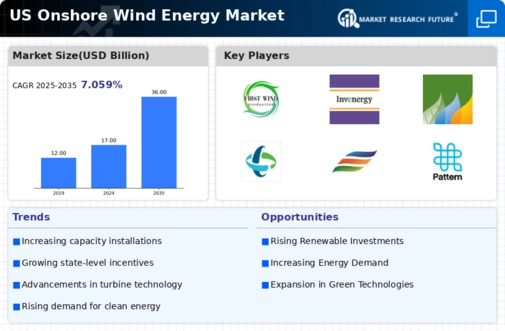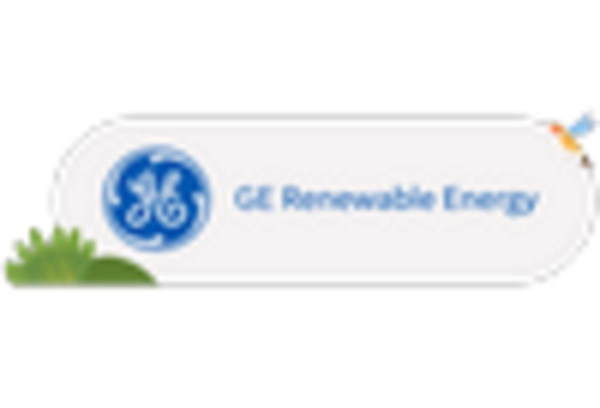Cost Competitiveness
The onshore wind-energy market is witnessing a notable decline in the cost of wind energy generation, making it increasingly competitive with traditional energy sources. The levelized cost of electricity (LCOE) for onshore wind has decreased by over 70% since 2009, with current estimates around $30 to $60 per MWh. This cost reduction is attributed to advancements in turbine technology, economies of scale, and improved operational efficiencies. As the cost of wind energy continues to fall, it is expected that more utilities and businesses will invest in onshore wind projects, further driving market growth. The financial viability of onshore wind energy not only enhances its attractiveness but also supports the broader transition to a low-carbon energy system in the U.S.
Rising Energy Demand
The onshore wind-energy market is experiencing a surge in demand for renewable energy sources, driven by increasing energy consumption across various sectors. As the population grows and industrial activities expand, the need for sustainable energy solutions becomes more pressing. In 2025, the U.S. energy consumption is projected to reach approximately 4,000 million MWh, with a significant portion expected to be sourced from renewable technologies. This trend indicates a robust market potential for onshore wind energy, as it offers a clean and efficient alternative to fossil fuels. Furthermore, the transition towards electrification in transportation and heating sectors is likely to further amplify the demand for wind-generated electricity, positioning the onshore wind-energy market as a critical player in meeting future energy needs.
Policy and Incentives
The onshore wind-energy market is significantly influenced by federal and state policies aimed at promoting renewable energy development. Incentives such as tax credits, grants, and renewable portfolio standards play a crucial role in shaping the market landscape. The Production Tax Credit (PTC) and Investment Tax Credit (ITC) have been instrumental in driving investments in wind energy projects, resulting in a substantial increase in installed capacity. As of 2025, the U.S. has over 130 GW of installed onshore wind capacity, with further growth anticipated due to supportive policy frameworks. These incentives not only lower the financial barriers for project developers but also encourage long-term commitments to renewable energy, thereby fostering a favorable environment for the onshore wind-energy market.
Environmental Concerns
Growing awareness of climate change and environmental degradation is propelling the onshore wind-energy market forward. As stakeholders increasingly recognize the adverse effects of fossil fuel consumption, there is a collective push towards cleaner energy alternatives. In 2025, it is estimated that renewable energy sources, including wind, will account for over 50% of new electricity generation capacity in the U.S. This shift is indicative of a broader societal commitment to reducing greenhouse gas emissions and promoting sustainability. The onshore wind-energy market is well-positioned to capitalize on this trend, as it provides a renewable solution that aligns with environmental goals and public sentiment, potentially leading to increased investments and policy support.
Technological Innovations
The onshore wind-energy market is benefiting from continuous technological innovations that enhance the efficiency and reliability of wind energy systems. Recent advancements in turbine design, such as larger rotor diameters and improved materials, have led to higher energy capture rates and reduced maintenance costs. Additionally, the integration of smart grid technologies and energy storage solutions is expected to optimize the performance of wind farms. As of 2025, the average capacity of new onshore wind turbines has increased significantly, with some models exceeding 3 MW. These innovations not only improve the economic feasibility of onshore wind projects but also contribute to the overall stability and resilience of the energy grid, making the market more attractive to investors and developers.

















Leave a Comment